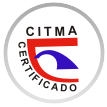Model of labor migrants' adaptation in the context of socio-economic processes in modern Russia
Keywords:
Adaptation, Integration, Migrantophobia, Migration, Labor migrants, Migration policyAbstract
The article aims to identify and develop a model for adapting labor migrants to the conditions of modern Russia. The research tasks include the following: creating a concept to assist the adaptation of foreign citizens, assessing potential risks, and formulating an effective system to regulate labor migration based on national economic and social interests. The study employs humanistic, systemic-complex, and holistic approaches as its methodology. The main research methods include document analysis, classification and grouping, expert evaluation, comparative analysis, synthesis, statistical methods, and structural-functional analysis. The study revealed two opposing trends in the settlement of foreign workers. The first is the formation of compact settlements by immigrant groups, while the second trend is their dispersed settlement. Labor migrants immediately find themselves marginalized within the social structure of Russian society, forming a new, disadvantaged lower layer. Psychological effects of deprivation and isolation significantly impact their adaptation to the new environment. Migratory processes display characteristics of assimilation, integration, and segregation. The findings will help authorities better understand migrants' motivation and behavioral psychology, prevent the emergence of nationalist and religious radical sentiments among them, build an adequate migration policy system, and guide labor migrants toward integration into society.
Downloads
Published
How to Cite
Issue
Section
License
Copyright (c) 2025 Editorial "Universo Sur"

This work is licensed under a Creative Commons Attribution-NonCommercial-NoDerivatives 4.0 International License.
La editorial "Universo Sur", de la Universidad de Cienfuegos, publica el contenido de la Revista "Universidad y Sociedad" bajo una Licencia Creative Commons Atribución-NoComercial-SinDerivar 4.0 Internacional.
© Podrá reproducirse, de forma parcial o total, el contenido de esta publicación, siempre que se haga de forma literal y se mencione la fuente.










